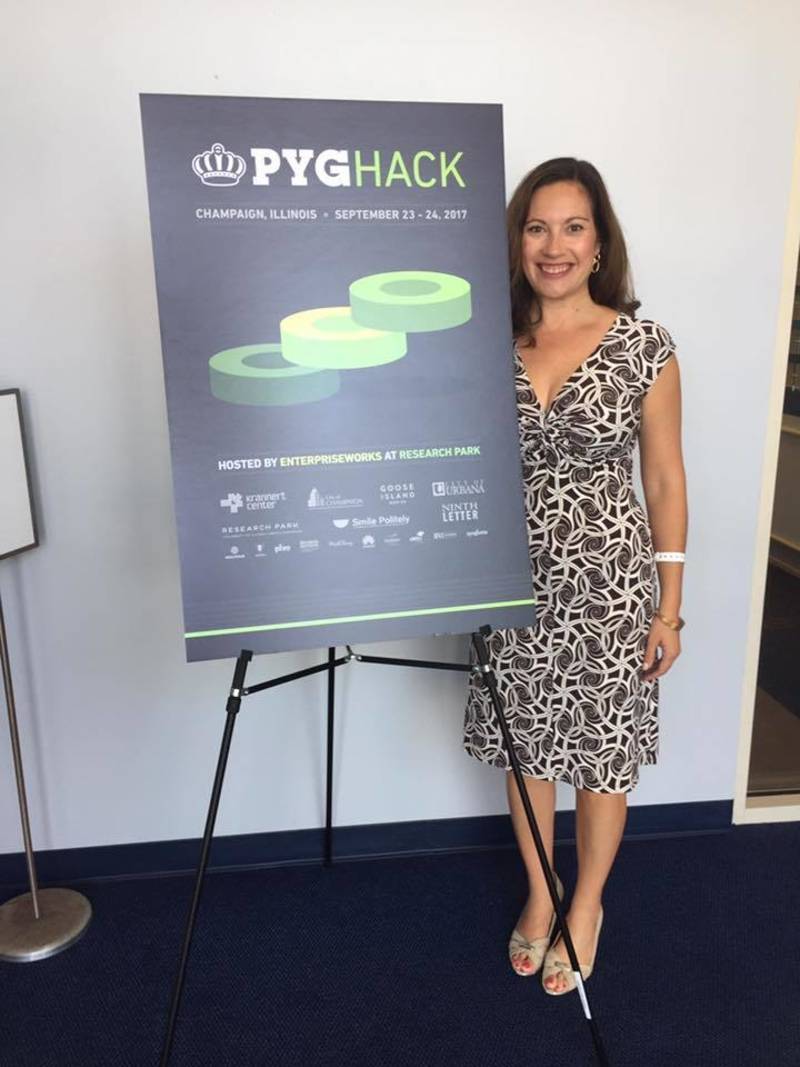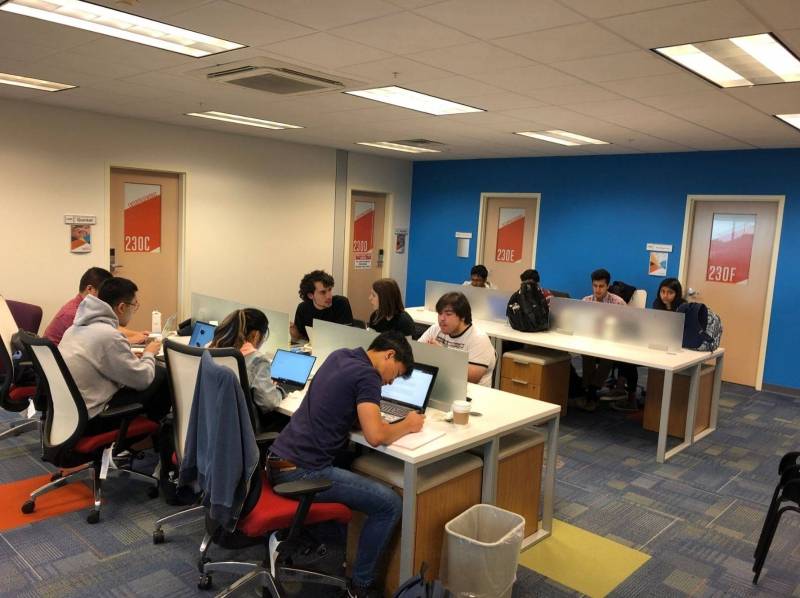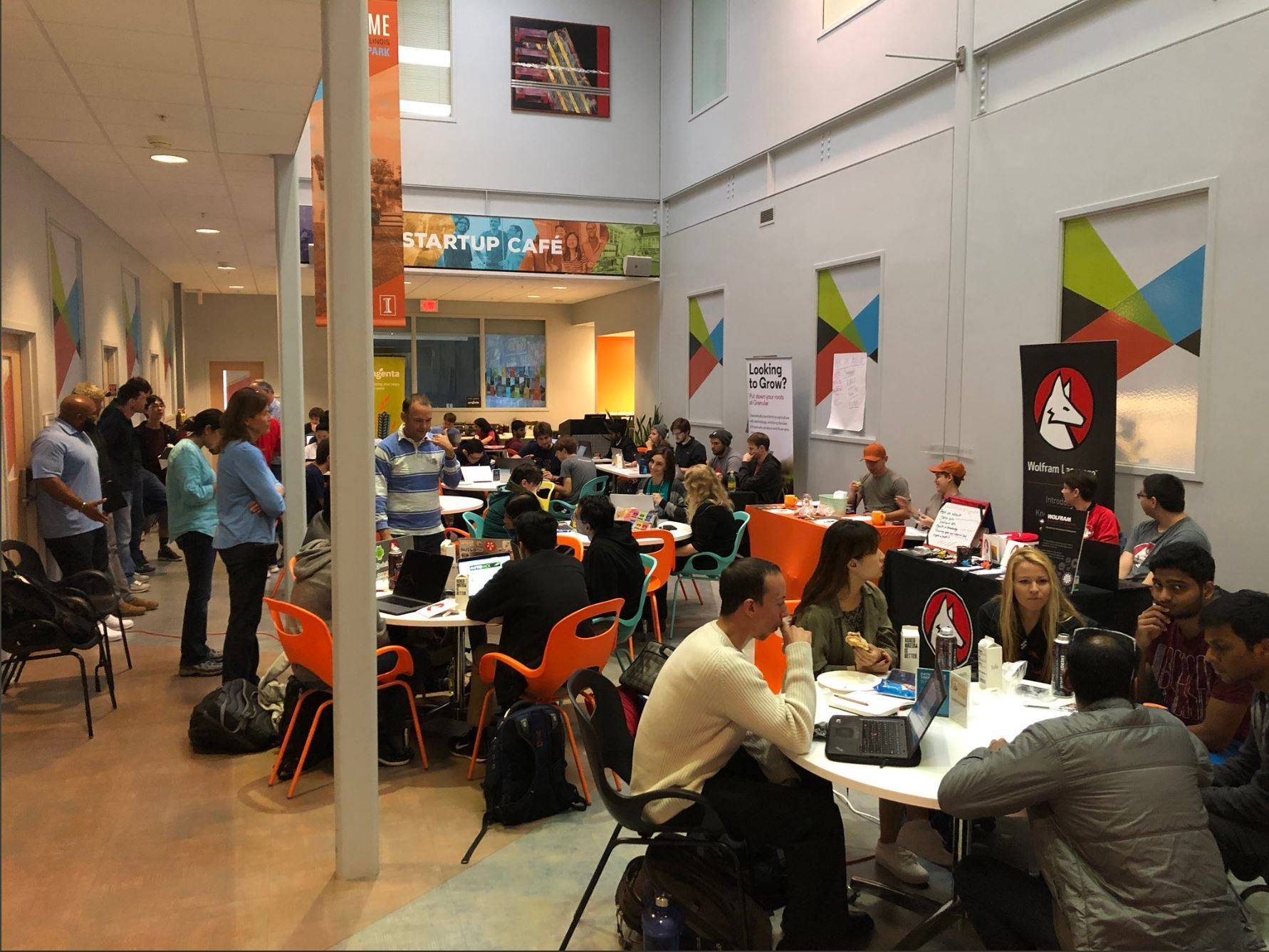PYGMALION began as a music festival, but it has expanded well beyond that in the last 15 years, and tech is one area that has continued to grow in prominence. We live in a tech-soaked community; one that produced the first web browser that was truly accessible to the general public, launched the founder of Paypal, and was the birthplace of HAL 9000.
Okay, that last one isn’t real life, but we do have actual innovation happening here, and a lot of that innovating is happening at Research Park, home to our very own tech incubator in EnterpriseWorks.

Research Park, under the leadership of director Laura Frerichs, has been partnering with PYGMALION for three years on what is becoming an important component of the weekend festivities: PYGHACK (you can find the full list of partners here.) This Friday and Saturday, innovators and problem solvers will gather in the lobby of Krannert Center for the Performing Arts with the goal of “helping the greater Champaign-Urbana area and community through social good combined with innovation and technology.” This year there’s a theme, HOMEHACK, tying the competition to Geoff Sobelle’s HOME: “an evocative performance depicting the various meanings we humans attribute to our homes, showing how a house (a physical structure) can be transformed into a home (a sense of belonging and ownership of a space).”
A little RP background: There are 17 buildings housing about 125 companies, 2200 employees, and 800 students. There are Fortune 500 companies working on innovation projects while tapping into University resources, as well as startups taking University research and finding ways to turn that into a commercial product, and everything in between.
I spoke with Frerichs about the hack and the partnership that has been forged between Research Park and PYGMALION.
Smile Politely: For people like me, someone who didn’t even know what a hackathon was until PYGMALION, and maybe I’m still not completely clear, what IS a hackathon?
Laura Frerichs: So hackathons exist all over this campus and all over the country and the world as a way to be scrappy in hacking something over the course of, usually, a weekend. It’s always a short, concentrated period of time to use primarily software development skills to “hack” a new solution. That might be a mobile app, it might be a piece of software, it might be a technology that’s hardware. It’s also important that in most hackathon settings its a team working on something. A hackathon is a competition (with varying conditions or parameters). It might be the type of participants, all students, or it could be that it’s an outcome they’re seeking.
At the beginning of the PYGHACK (in 2017) we saw an opportunity to help the community. We were seeking new innovation or new designs of software or apps that would use data to support the community. That might be infrastructure, it could be to reduce crime, it could be to help underprivileged citizens — the idea that technology could help others.
SP: How did that initial collaboration come about?
Frerichs: The largest hackathon of students takes place here at the University of Illinois, called Hack Illinois. It’s huge, and has all of these different corporate participants and students that come from out of town to participate, in addition to our own students who put on this massive event. The success of that was one of the catalyst ideas to say: that’s great, but they’re not really seeing the community or the fun side of Champaign-Urbana while they’re here. We wanted something that was able to take one of the best weekends in Champaign-Urbana, exposing this place as a fun culturally rich place to be, and adding an element that appeals to the technology enthusiast. People travel for these hackathons, and there is certainly a clientele that likes the idea of working as a team, competing for prizes, and we hope they have fun while they’re doing it. So work really hard, and play hard all weekend. The idea was that we would show two areas of the community: the technology prowess of the community, and the culture and music scene. There’s also this “do good feel good” piece of it.
SP: The first two years it was held here, at Research Park, what was the impetus that moved it to Krannert this year?
Frerichs: We’re really grateful for the companies that came together to launch it in the first place, so companies like Wolfram and Pixo and Yahoo and others that were behind the initial ideation of what might be for such an event. It was great for the teams to be here (at Research Park) and have help. One of the really cool things that we experienced in the last two years is these “help desks.” There are people here that are in the technology community that (participants) are able to go up and ask if having a challenge with front end development or back end development or data or something, you have people there to guide you through the process.

At EnterpriseWorks we had people in all corners of this building. This building is always fully leased and packed with startups, and it’s a challenge to get everybody in the space. It’s a high class problem to have. Also as much as we were really enthusiastic about having it here, it also was important to make sure there weren’t two different worlds. The organization of the event this year was around the idea that let’s get people more immersed in the music scene that’s happening as well, and PYGMALION has changed over the years. The focus now is really centered around Urbana and Goodwin and Krannert Center. That was the goal, that these two types of participants would see each other and even if you’re not participating in the hackathon, see people who are.
I’m sure many people have never experienced a hackathon. If you bring it up with my mom, she’ll wonder why people are hacking into something. It’s not about hacking for bad, or to break something, it’s coming together to create something new.
SP: Who typically participates in the event?
Frerichs: Certainly we’ve seen students come to participate, we’ve also seen people who are professionals in the tech sector choose to do this for fun. And we’ve definitely had people visit. It’s not all Champaign-Urbana people. There are people who travel the hackathon circuit…it’s a sub-culture that travels, and they have hackathon websites where they promote this as a location. Then hopefully you get the side benefit of the music scene and Made Fest and literature.
SP: How does HOMEHACK theme shift the focus this year?
Frerichs: There might be people who this speaks to, whether it’s addressing homelessness or whether it’s addressing people who can stay and age in place in their home, or whether it’s addressing smart homes of the future…there are many different ways to play on that theme. I think the goal was, let’s take a musical performance and be able to have something that has a tech side of it and continues the education that Krannert does so well. We want to allow people to have creativity around it, so you don’t really want to imagine what the outcomes might be.
SP: What part does Research Park play in the competition?
Frerichs: We’ve been financial supporters since the beginning. PYGHACK was an area that made sense for us to be able to contribute. We’ve also had companies from the Research Park help to judge and mentor the teams. For us at EnterpriseWorks, if somebody wants to take an idea and turn it into a company, this is a resource center for them.
And we are just promoting overall. Sometimes the culture, downtown, nightlife world and the tech world out here don’t always “match-make” that well. We have a very engineering-heavy, deep tech, scientific crew out here, and we want to make sure they have fun too.
PYGHACK happens this Friday from 5 to 11 p.m. and Saturday from 7 a.m. to 7 p.m. in the lobby of Krannert Center for the Performing Arts. Participation is free, and you can register up until 5 p.m. on Friday. This year’s event is presented by Research Park and Siebel Center for Design.
Photos from University of Illinois Research Park Facebook page








